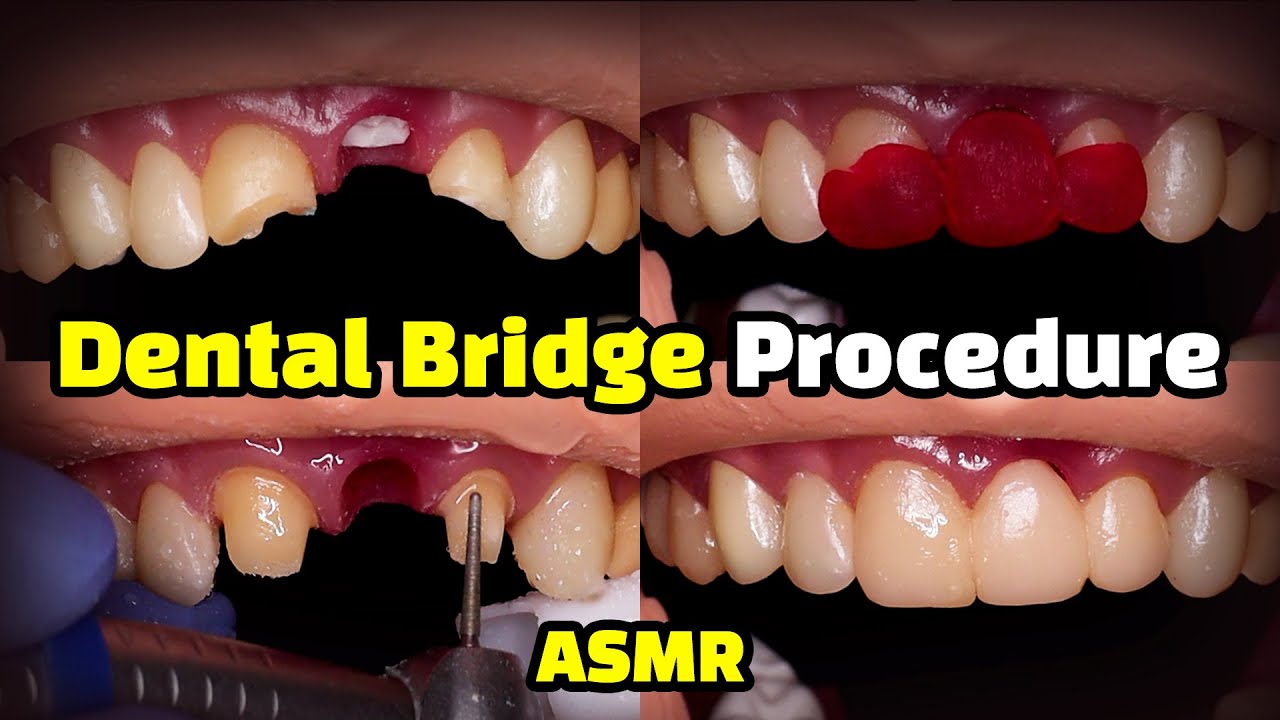Dental Bridge Front

The world of dental restorations has evolved significantly, offering a multitude of options for individuals seeking to replace missing teeth. Among these, dental bridges stand out as a versatile and effective solution, particularly for addressing gaps in the frontal area of the mouth. A dental bridge front, specifically designed for the anterior (front) teeth, not only restores the aesthetic appeal of one’s smile but also plays a crucial role in maintaining the overall oral health and functionality.
Understanding Dental Bridges
A dental bridge is a fixed dental restoration used to replace one or more missing teeth by joining an artificial tooth to adjacent teeth or dental implants. The bridge is composed of two crowns for the teeth on either side of the gap—the abutment teeth—with the artificial tooth or teeth (pontic) in between. When the bridge is placed, it literally bridges the gap between the teeth.
For the frontal area, the dental bridge front is tailored to meet the aesthetic and functional demands of this highly visible and critical region of the mouth. The anterior teeth are responsible for biting, cutting food, and significantly influencing the appearance of the smile. Therefore, a dental bridge in this area must be crafted with meticulous attention to detail, ensuring not only a natural look but also optimal functionality.
Types of Dental Bridges for the Front Teeth
- Traditional Dental Bridge: The most common type, this involves creating a crown for the tooth on either side of the missing tooth, with a pontic in between. These crowns are then cemented onto the natural teeth, securing the artificial tooth in place.
- Cantilever Dental Bridge: Used when there are adjacent teeth on only one side of the missing tooth, a cantilever bridge is less common for the front teeth due to aesthetic concerns and the stress it places on the abutment tooth.
- Maryland Bonded Dental Bridge: This type of bridge involves wings that are bonded to the back of the adjacent teeth, making it a more conservative approach. It is often used for front teeth because it requires less preparation of the adjacent teeth.
- Implant-Supported Dental Bridge: This modern approach involves placing dental implants to support the bridge, offering greater stability, comfort, and durability. For the front teeth, this can be an excellent option, especially when multiple teeth are missing.
Considerations for a Dental Bridge Front
- Aesthetics: The bridge must match the color, shape, and size of the surrounding teeth to maintain a natural appearance.
- Functionality: It should enable normal biting and chewing functions without discomfort or instability.
- Durability: The materials used and the construction quality significantly affect how long the bridge lasts, with well-made bridges potentially lasting over a decade with proper care.
- Hygiene: Although the bridge itself cannot decay, the abutment teeth and surrounding gums can still be affected by plaque and tartar, emphasizing the importance of good oral hygiene practices.
- Cost: The expense can vary widely depending on the materials, the number of teeth being replaced, and whether dental implants are used.
The Process of Getting a Dental Bridge Front
- Consultation: Discussing the options with a dentist, including the type of bridge, materials, and costs.
- Preparation: The adjacent teeth are prepared to support the bridge by removing some enamel to accommodate the crowns.
- Impressions: Molds of the teeth are taken to create a model for the bridge.
- Temporary Bridge: A temporary bridge may be provided to protect the teeth and gums while the permanent bridge is being made.
- Fitting: The permanent bridge is fitted and adjusted to ensure comfort and proper function.
- Follow-Up: Regular check-ups are crucial to monitor the bridge’s condition and address any issues early on.
Conclusion
A dental bridge front is a valuable solution for individuals looking to restore their smile and oral function. With advancements in dental technology and materials, the options for dental bridges continue to expand, offering more natural-looking and durable solutions than ever before. Whether you’re considering a traditional bridge or an implant-supported one, consulting with a skilled dentist is the first step towards regaining a confident, healthy smile.
FAQ Section
How long does it take to get a dental bridge front?
+The process typically involves several appointments over a few weeks. The initial consultation and preparation can take about an hour, while the subsequent fitting and adjustment may require one to two more visits, each about an hour long.
Do dental bridges for the front teeth look natural?
+Yes, when crafted by skilled dentists, dental bridges can look very natural. The materials used, such as porcelain, are designed to mimic the appearance of real teeth, and the bridge is tailored to match the surrounding teeth in color, shape, and size.
Can anyone get a dental bridge front?
+How do I care for my dental bridge front?
+Caring for a dental bridge involves regular brushing and flossing, just like natural teeth. It's also important to clean under the pontic, where food particles and plaque can accumulate. Regular dental check-ups are crucial for monitoring the bridge's condition and addressing any issues before they become major problems.


